Benefits of Gold Plated Jewelry: A Comprehensive Guide
Gold plated jewellery is a great way to participate in current fashion trends without the high cost of solid gold, allowing you to update your jewellery collection as styles change. Gold plated jewelry is made by applying a very thin layer of gold to a base metal, which contributes to its affordable price and also means it may not be as durable as other types of gold jewelry. Additionally, gold-plated jewelry is often lighter and more comfortable to wear than solid gold due to the less dense base metal.
To maintain their appearance, it is recommended to avoid exposing gold-plated jewellery to lotions, perfumes, and cleaning agents, as these can cause damage over time. Additionally, storing gold plated jewellery in a dry, cool place can help maintain its appearance. When buying gold plated jewellery, consider factors such as quality, durability, and value, as it is a cost-effective alternative to solid gold. Using anti-tarnish bags or cloths can also help protect gold plated jewelry from tarnishing during storage. However, gold-plated jewellery may flake or chip quickly due to its thin layer of gold. For more information, see our articles.
Discover our collection of gold plated options, featuring a wide range of jewellery types including rings, necklaces, bracelets, and earrings. These jewelry pieces offer the look and feel of traditional gold jewellery at a more accessible price, making them a versatile and stylish alternative to both solid gold options and costume jewellery. Gold-plated jewelry is also an attractive option for children's and costume jewelry due to its low price point.
Introduction to Gold Jewelry
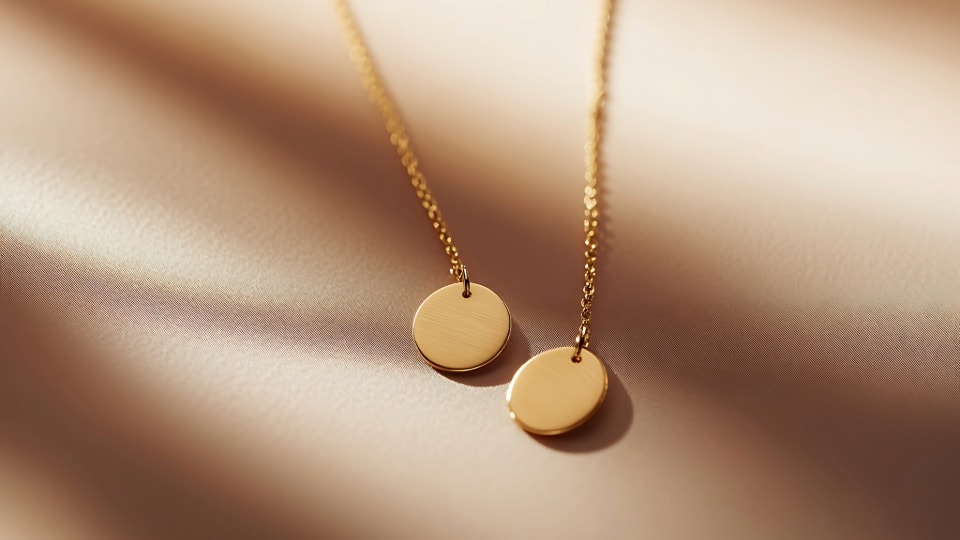
Gold jewelry has long been cherished for its timeless beauty and enduring value, making it a staple in jewellery collections around the world. From ancient civilizations to modern fashion runways, gold has symbolized wealth, status, and personal style. Today, the term “gold jewelry” covers a broad spectrum of jewellery types, including solid gold, gold plated jewelry, gold-plated rings, and gold filled jewelry.
Each type offers its own unique benefits and price points, making it important to understand the differences before making a purchase. Gold plated jewelry, for example, features a thin layer of gold applied over a base metal, providing the luxurious look of gold at a fraction of the cost. In contrast, gold filled jewelry uses a thicker layer of gold, resulting in greater durability and a longer-lasting finish.
Gold filling refers to the process of bonding a substantial layer of gold to a base metal, which gives jewelry enhanced durability and helps retain its value over time. However, gold filling can have disadvantages such as potential tarnishing, corrosion, and causing skin sensitivity in some individuals.
The thickness of the gold layer, the choice of base metal, and the quality of the gold plating all play crucial roles in determining the value, appearance, and longevity of each jewelry piece. By understanding these distinctions, you can confidently choose the gold jewelry that best suits your style, needs, and budget—whether you’re seeking an affordable alternative for everyday wear or a statement piece for special occasions.
What is Gold Plating
Definition and Basic Concept
Gold plating is a popular technique in the jewelry world that gives you the luxurious look of gold jewelry without the hefty price tag. In this process, a very thin coating of gold is carefully applied to a base metal—often sterling silver or other metals—creating what's known as gold plated jewelry. Gold plated jewelry is created by applying a thin coating of gold to a base metal, and the gold thickness is a key factor in its durability.
This method allows you to enjoy the beauty and shine of gold at a much more affordable price, making it a cost-effective alternative to solid gold jewelry. Additionally, gold plated jewelry is often indistinguishable from solid gold, making it appealing to consumers. However, the base metal used in gold plating may be prone to corroding or oxidizing, which can lead to skin reactions for some individuals.
Individuals allergic to nickel should avoid gold plated jewelry as it may contain this metal. Allergic reactions are more common with gold plated jewelry as it often contains nickel in the base metal. The technique of electroplating, which is central to gold plating, was invented by Luigi Brugnatelli in 1805, revolutionizing the jewelry industry.
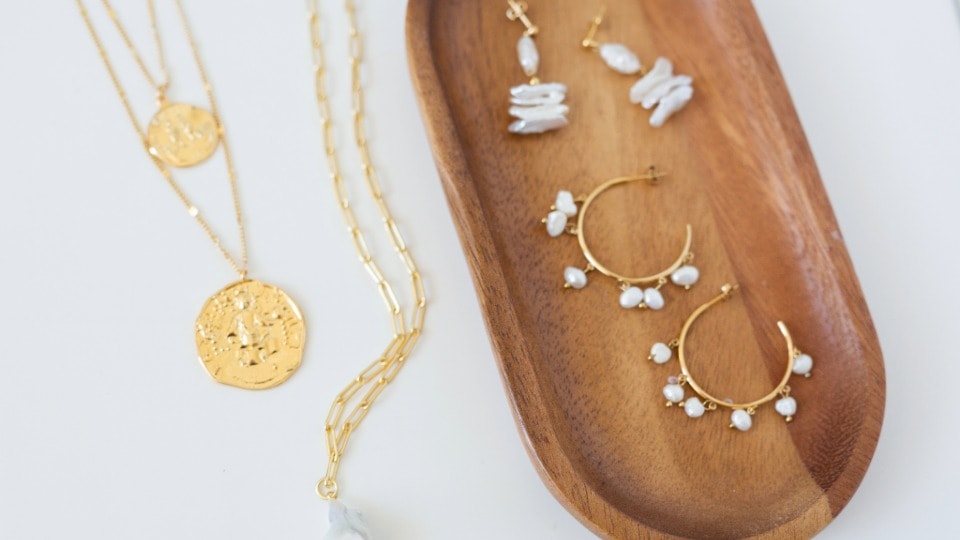
The Electroplating Process and Thickness Standards
The gold plating process uses a method called electroplating. Here, the jewelry piece made from a base metal is submerged in a special plating solution containing gold ions. An electric current is then passed through the solution, causing a layer of gold to bond to the surface of the underlying metal. The thickness of the gold layer can vary, but it's usually measured in microns and typically ranges from 0.17 to 2.5 microns.
However, the gold layer in gold plated jewelry is often less than 0.5 microns thick. In contrast, gold vermeil jewelry must have a base of sterling silver and a gold layer that is at least 2.5 microns thick, making it a more durable and valuable option. Vermeil must meet a minimum gold thickness standard of 2.5 microns, while gold plated items often have a much thinner coating. A thicker gold layer means the gold plated piece will be more durable and better able to withstand everyday wear and tear.
The thinner the gold plating, the more susceptible it is to wearing off and revealing the base metal, which can cause skin irritations. Gold plated jewelry can result in allergic contact dermatitis for some wearers. The electroplating process requires specific chemicals, cleaners, and tools to ensure quality finishes.
Types, Care, and Maintenance
Gold plated jewelry comes in many forms, from necklaces and rings to earrings and bracelets. When buying gold plated pieces, it's important to consider both the thickness of the gold and the quality of the base metal. Both gold plated and vermeil jewelry use precious metals, such as gold and sterling silver, and the choice of precious metal affects quality and value.
For example, gold plated items with a sterling silver base tend to last longer and maintain their shine, especially if the gold layer is substantial. Proper care is also key—avoid wearing your gold plated jewellery in water, keep it away from harsh chemicals, and gently clean it with a soft cloth to preserve its finish. Microfiber cloths are recommended for daily cleaning due to their soft texture.
If the jewelry becomes seriously dirty, it should be cleaned with lukewarm soapy water and a cotton swab to ensure it remains in good condition. Over time, gold plated jewelry can wear off, revealing the base metal beneath, so proper maintenance is essential. Faded jewelry can often be restored using home-plating kits or professional services to revive its color and shine. Gold plated jewelry can also be made from various base metals, including copper or brass.
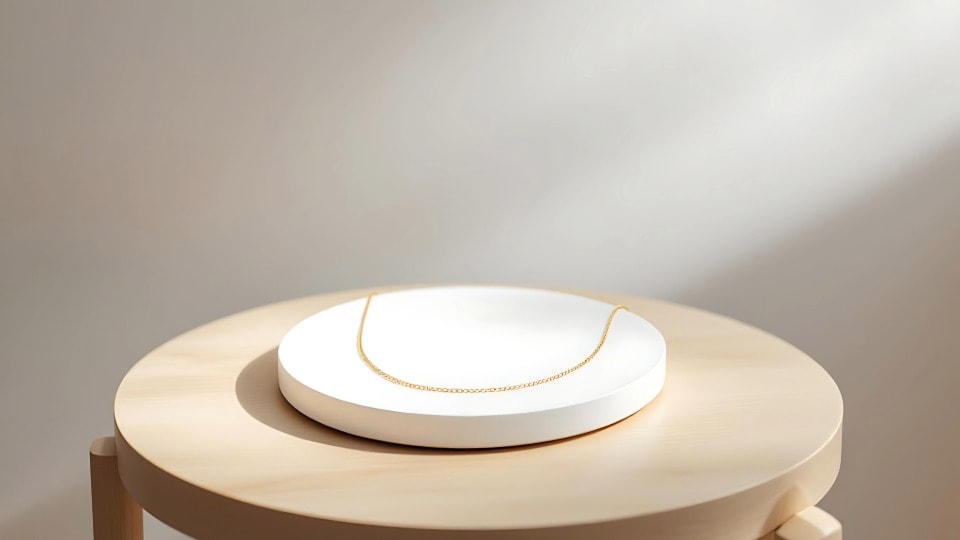
Affordability and Comparison with Other Gold Jewelry Types
Whether you're building a stunning collection for special occasions or looking for everyday wear options, it offers a stylish and affordable way to express your personal style without breaking the bank. With the right care and attention, your gold plated pieces can remain a beautiful part of your jewellery collection for years to come. Gold-plated jewellery is usually more affordable than gold vermeil jewellery, making it an accessible choice for many.
However, gold vermeil is generally more durable than gold plated jewelry due to its thicker gold layer, which provides better resistance to wear and tear. Gold vermeil has a higher value than gold plated jewelry because of its sterling silver base and thicker gold layer. Gold vermeil pieces are less likely to tarnish due to the use of sterling silver as the base metal.
Gold vermeil and gold filled jewelry are often recommended for those with skin allergies because they are less likely to cause reactions. Gold filled jewelry is a popular alternative to gold plated jewelry, offering greater durability and longevity due to its thicker layer of gold, though it can still be susceptible to tarnishing or corrosion over time.
To maintain its quality, it's recommended to take off gold plated jewelry when swimming or showering to prevent exposure to moisture and chemicals. Gold filled and vermeil jewelry are designed to withstand wear better than standard gold plated items. When it comes to special pieces like a wedding ring, proper care and specific cleaning methods are especially important to preserve their beauty and longevity.
Market Position and Value Comparison
The jewelry market is dynamic and constantly evolving, with gold plated options responding to changing consumer trends and preferences. When comparing gold plated jewelry to solid gold, it's important to note that pure gold and real gold are used in fine jewelry and solid gold jewellery, which are more valuable and durable than gold plated options. Gold pieces can refer to both solid gold and high-quality gold jewelry, which differ from gold plated items in terms of value and longevity. The future of gold-plated jewelry looks promising, with advancements in technology leading to more durable pieces.
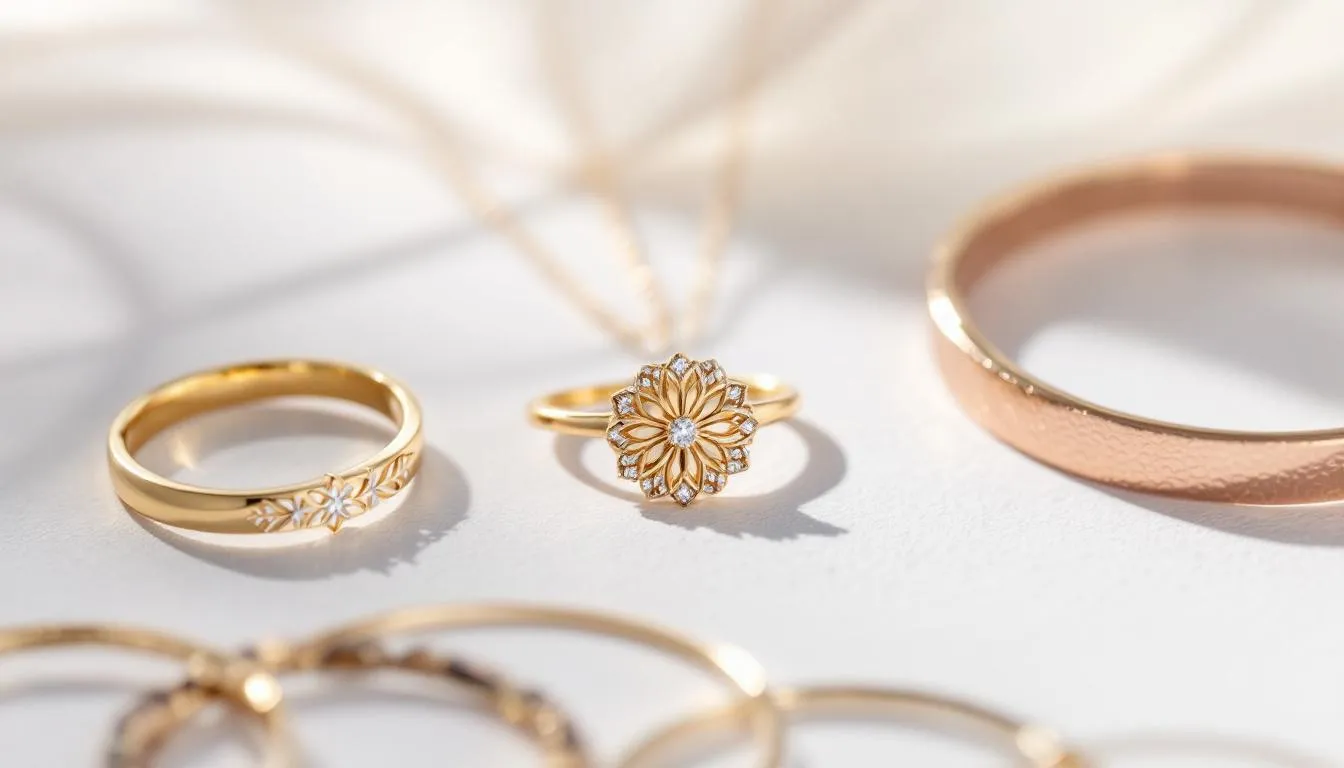
Types of Gold Plated Jewellery
Gold plated jewellery is available in a variety of styles and finishes, each offering its own unique charm and advantages. One of the most sought-after types is gold vermeil, which features a sterling silver base coated with a substantial gold layer. This combination not only delivers a luxurious appearance but also reduces the risk of skin irritation, making it a popular choice for those with sensitive skin.
Rose gold plated jewellery is another favorite, distinguished by its warm, pinkish hue created by blending gold with copper. This romantic color has become a staple in modern jewellery collections, adding a touch of elegance and individuality. For a unique and romantic gift idea, consider the Flower Hearts Necklace – Multicolour Blooming Pendant that Opens and Closes. For those who prefer a cooler tone, white gold plated jewellery is often finished with a layer of rhodium, enhancing its brightness and durability.
When purchasing gold plated jewellery, it’s important to consider the type of gold plating, the base metal used, and the thickness of the gold layer. These factors will help you select high-quality gold plated pieces that not only look stunning but also stand the test of time, all while fitting your personal style and budget.
Gold Filled Jewellery
Gold filled jewellery offers an excellent balance between luxury and affordability, making it a popular choice for those who want the look and feel of solid gold without the high price tag. Unlike gold plated jewelry, which features a thin layer of gold, gold filled jewellery is crafted by bonding a thick layer of gold to a base metal—typically brass—using heat and pressure.
This process results in a durable and long-lasting jewelry piece that can withstand everyday wear and tear. Gold filled jewellery is often marked with designations like 1/20 14K GF or 1/10 12K GF, which indicate the proportion of gold to base metal in the piece. The substantial gold layer in gold filled jewellery makes it more resistant to tarnishing and fading compared to standard plated jewelry.
However, like all jewelry, gold filled pieces still require proper care to maintain their shine and longevity. With regular cleaning and mindful wear, gold filled jewellery can remain a beautiful and cost effective alternative to solid gold for years to come.
Gold Content and Quality
When it comes to choosing gold jewellery, understanding gold content and quality is essential for making a wise investment. Gold plated jewellery typically features a thin layer of gold applied over a base metal, with the thickness of this layer varying from piece to piece. Some gold plated items may have a thicker gold layer, offering greater durability and a longer-lasting finish.
Gold filled jewellery, on the other hand, is known for its substantial gold layer, which is mechanically bonded to the base metal, resulting in a more robust and enduring piece. The gold purity—often marked as 14K, 18K, or 24K—also plays a significant role in determining the value and appearance of gold jewellery.
When purchasing gold plated or gold filled jewellery, it’s important to consider not only the gold content and thickness of the gold layer but also the type of base metal used and the reputation of the manufacturer or seller. By paying attention to these details, you can ensure that your gold jewellery offers both beauty and lasting quality, making it a valuable addition to your collection.
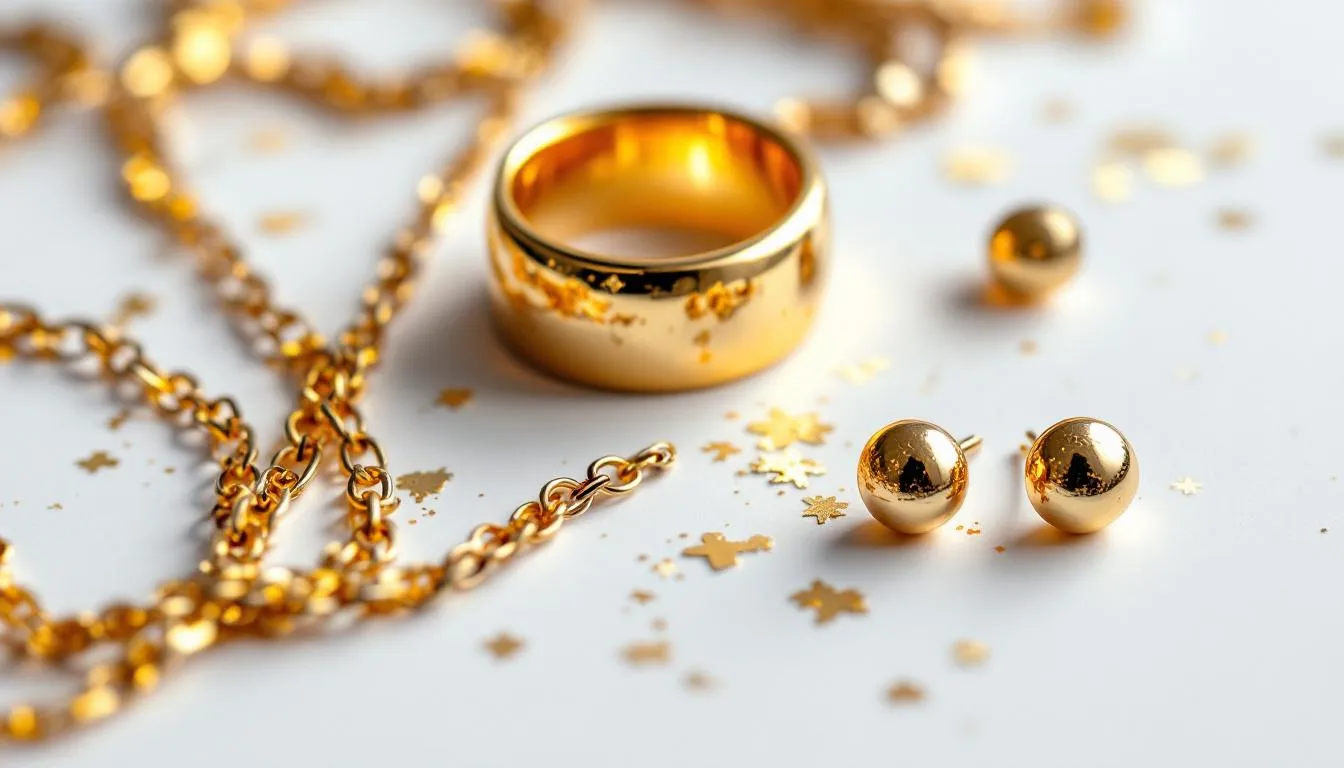
Durability and Longevity of Gold Plated Jewelry
Gold plated jewelry is celebrated for its stylish look and accessible price, but its durability and longevity depend on several key factors. The thickness of the gold layer is one of the most important elements—pieces with a thicker layer of gold, typically 2.5 microns or more, are better equipped to withstand everyday wear and tear. The choice of base metal also plays a significant role; gold plated jewelry with a sterling silver base is generally more robust and longer-lasting than those made with other base metals.
To maximize the lifespan of your gold plated jewelry, it’s essential to practice proper care. Avoid exposing your plated jewelry to harsh chemicals, such as cleaning agents or perfumes, as these can erode the gold layer and dull its shine. Water can also accelerate the fading of the gold, so it’s best to remove your jewelry before swimming or showering. Regularly cleaning your gold plated pieces with a soft cloth helps maintain their luster and prevents the buildup of dirt and oils that can wear down the gold layer. Storing your jewelry in a cool, dry place further protects it from environmental damage. By following these simple steps, you can enjoy the beauty of your gold plated jewelry for years to come.
Health and Safety Considerations
When choosing gold plated jewelry, it’s important to consider health and safety, especially if you have sensitive skin. Some gold plated pieces use base metals like nickel, which is a common allergen and can cause skin irritation or contact dermatitis when the gold layer wears thin. To reduce the risk of allergic reactions, look for gold plated jewelry crafted with hypoallergenic base metals such as sterling silver, or opt for gold filled jewelry, which features a thicker layer of gold that acts as a stronger barrier against the underlying metal. Gold-plated jewelry also offers hypoallergenic options when plated over sterling silver or stainless steel.
Gold vermeil pieces are another excellent choice for those with sensitive skin, as they combine a sterling silver base with a thicker layer of gold, making them less likely to cause irritation. Regardless of the type, proper care is essential to prevent the gold layer from wearing off and exposing the base metal beneath. If you notice any signs of irritation, it’s best to discontinue wearing the jewelry and consult with a professional about alternative options. By selecting high-quality gold plated, gold filled, or gold vermeil jewelry and following recommended care practices, you can enjoy beautiful pieces without compromising your comfort or safety.
Aesthetic and Visual Attributes
Gold plated jewelry is prized for its radiant, luxurious appearance that closely resembles solid gold jewelry, but at a fraction of the cost. The thin layer of gold imparts a warm, golden glow that flatters a wide range of skin tones and complements both classic and contemporary styles. Whether you’re searching for a timeless wedding ring, a chic fashion accessory, or an elegant piece of fine jewelry, gold plated jewelry offers a versatile and cost effective alternative to solid gold.
The beauty of gold plated jewelry lies in its ability to deliver high-end style without the hefty price tag. With a variety of designs available—from delicate, understated pieces to bold statement jewelry—there’s something to suit every personal style and occasion. To keep your gold plated jewelry looking its best, avoid wearing it in water and clean it regularly with a soft cloth to maintain the brilliance of the gold layer. With proper care, your gold plated jewelry can remain a stunning and cherished part of your jewelry collection for years to come.
In Conclusion
Gold plating is an affordable jewelry technique that applies a thin layer of gold (typically 0.17-2.5 microns) to base metals like sterling silver, copper, or brass. Using electroplating technology invented in 1805, this process creates jewelry that looks like solid gold at a fraction of the cost. While visually appealing and budget-friendly, gold plated jewelry requires careful maintenance and may cause allergic reactions due to nickel in base metals. The thin gold layer gradually wears off with use, revealing the underlying metal. PVD Coated Stainless Steel applies gold through a durable vacuum coating process, resulting in a stronger and tarnish-resistant finish.
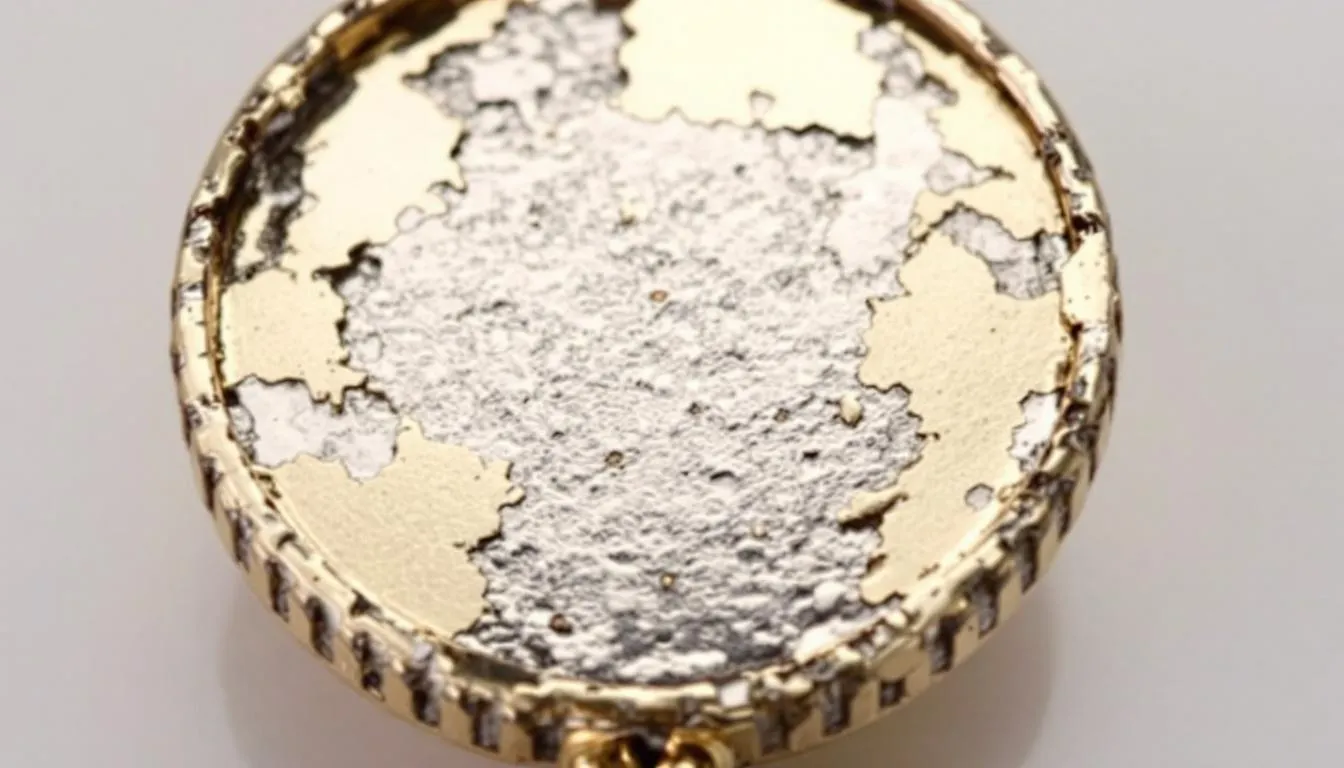
Frequently Asked Questions About the Benefits of Gold Plated Jewelry
What are the main benefits of gold plated jewelry?
Gold plated jewelry offers the luxurious appearance of solid gold at a much more affordable price. It allows individuals to enjoy stylish, on-trend pieces without the hefty cost associated with solid gold jewelry. Additionally, gold plated items are lightweight and versatile, making them comfortable for everyday wear and easy to pair with various outfits.
How does gold plated jewelry compare to solid gold pieces in terms of cost?
Gold plated jewelry is significantly cheaper than solid gold pieces because it uses only a thin gold layer over a base metal rather than being made entirely of gold. This makes gold plated options an excellent choice for those who want the look of gold without the financial commitment.
Is gold plated jewelry durable enough for daily wear?
While gold plated jewelry is less durable than solid gold or gold filled items due to its thin gold layer, pieces with a thicker gold layer and a good-quality base metal, such as sterling silver, can withstand regular wear if properly cared for. However, the thin gold layer wears over time, so gentle handling and avoiding exposure to water and chemicals can help extend its lifespan.
Can gold plated jewelry cause allergic reactions?
Some gold plated jewelry may cause allergic reactions if the base metal contains nickel or other allergens, especially once the thin gold layer wears off. Choosing gold plated pieces with a sterling silver base or opting for gold vermeil or gold filled jewelry can reduce this risk, making them better options for individuals with sensitive skin.
How should I care for gold plated jewelry to maintain its benefits?
To keep gold plated jewelry looking its best, avoid contact with water, lotions, perfumes, and harsh cleaning chemicals. Store pieces in a dry, cool place and clean them gently with a soft cloth. Using anti-tarnish bags or cloths during storage can also help preserve the gold layer and prevent tarnishing.
Are gold plated jewelry pieces suitable for fashion trends and special occasions?
Yes, gold plated jewelry is ideal for participating in current fashion trends without a large investment. Its affordability allows you to update your jewelry collection frequently with trendy pieces. Additionally, gold plated items can complement formal attire for special occasions, offering an elegant look at a fraction of the cost of solid gold jewelry.
Can gold plated jewelry be a good gift option?
Absolutely. Gold plated jewelry offers an affordable yet stylish gift choice suitable for various occasions, including birthdays, anniversaries, and holidays. Its versatility and attractive appearance make it a popular gift option that appeals to many tastes and styles.
How does gold plated jewelry compare to gold filled and gold vermeil?
Gold plated jewelry has a thinner gold layer compared to gold filled and gold vermeil pieces, which means it may wear off faster. Gold filled jewelry features a substantial gold layer mechanically bonded to a base metal, while gold vermeil uses a sterling silver base with a thicker gold layer. Both gold filled and vermeil are more durable and often recommended for those seeking longer-lasting pieces.
Is gold plating environmentally friendly?
Gold plating uses less gold than solid gold jewelry, which can reduce the environmental impact associated with gold mining. However, the electroplating process involves chemicals and energy use. Advances in technology and ethical sourcing are helping improve sustainability in the gold plating industry.
Can I have my gold plated jewelry replated?
Yes, when the thin gold layer wears off, many jewelers offer replating services to restore the original shine and appearance of your gold plated jewelry. This can extend the life of your favorite pieces and maintain their aesthetic benefits.
By understanding these frequently asked questions, you can better appreciate the benefits of gold plated jewelry and make informed decisions when purchasing or caring for your gold plated pieces.

 https://sarasbeads.co.uk
https://sarasbeads.co.uk